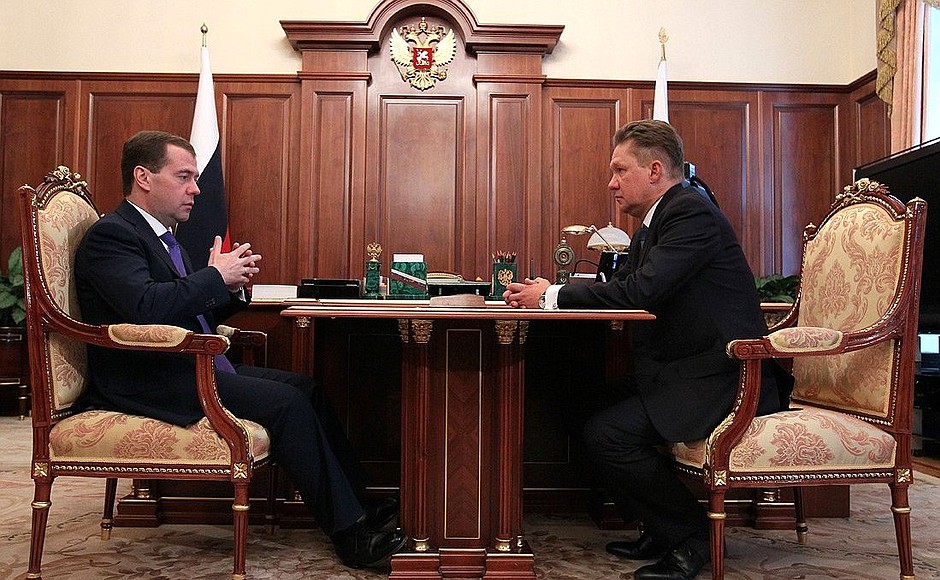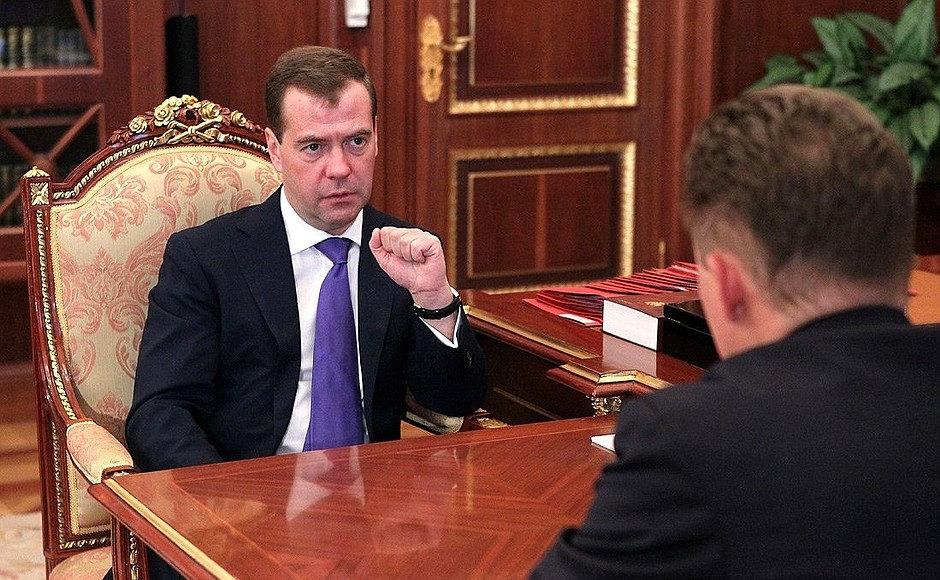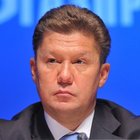* * *
President of Russia Dmitry Medvedev: Good evening, Mr Miller.
Gazprom is engaged in some major projects. Some of them have already been put into operation, such as Nord Stream, for example. Construction on other projects is just about to begin (I hope it will start very soon), particularly in the case of South Stream. How do things stand on this project, what are the latest events, what has been done, and what remains to be done?
Gazprom CEO Alexei Miller: Mr President, we have completed the overall feasibility study for this project, which covers the underwater part of the South Stream pipeline as well as its sections in the transit countries in Southeast and Central Europe.
Dmitry Medvedev: Please tell us what they are, since not everybody remembers.
Alexei Miller: They are Bulgaria, Serbia, Hungary and Slovenia, with segments to Croatia, the Republic of Serbia and a pipeline to Greece. Today, Gazprom has prepared a new, adjusted schedule after Turkey gave us permission last December to build the pipeline through its exclusive economic zone. We have updated our schedule and will be ready to begin construction in December of this year.
Dmitry Medvedev: Understanding the pipeline construction process, as well as its key parameters like capacity, will be dependent on talks with our Ukrainian partners, because there are different options: we can give it greater capacity or stop at some middle point. How do things stand right now with our Ukrainian friends? What is the status of our gas cooperation talks?
Alexei Miller: Mr President, the issue recently under consideration – the design capacity of the South Stream pipeline – has now become even more relevant in the context of the unusual cold wave in Europe at the beginning of February. In early February, much of Europe had abnormally low temperatures; even the Danube froze, as did the canals of Venice, so our European consumers increased their requests for Russian gas.
For its part, Gazprom did everything necessary to fully satisfy the needs of European consumers. However, a significant volume of gas transiting through Ukraine did not arrive in Europe.
Dmitry Medvedev: Why?
Alexei Miller: On certain days, as much as 40 million cubic metres of gas remained on Ukraine’s territory, and this certainly caused damage to Gazprom’s finances and reputation. At the same time, in this situation, there is no effective mechanism to control the actions of Naftogaz of Ukraine.
Dmitry Medvedev: Do I understand correctly that this means siphoning off gas?
Alexei Miller: Our Ukrainian partners took as much gas from the export pipeline as they felt necessary.
Dmitry Medvedev: In other words, beyond the scope of existing rules and not on the basis of agreements?
Alexei Miller: They took as much gas as they felt necessary; moreover, they took gas intended for European consumers, and our Ukrainian partners knew this. They knew the volume intended for Ukraine, in accordance with the ten-year contract in effect between us.
Dmitry Medvedev: But they did not ask us to increase their volume of supplies during that time?
Alexei Miller: On the contrary, Mr President, at the beginning of this year, our Ukrainian friends had brought up the question of reducing supply volume.
Dmitry Medvedev: Yes, I remember, from 52 billion to 27 billion cubic metres. And nevertheless, during the abnormal cold wave, they took gas.
Alexei Miller: However, during the unusually cold wave, Ukraine was taking gas at the annual pace of over 60 billion cubic metres.
Dmitry Medvedev: I see. Please look into all these instances within the framework of corporate procedures and civil-law agreements between Gazprom and Naftogaz of Ukraine.
For my part, I wanted to say the following in this context. Naturally, we will need to determine the ultimate capacity of the South Stream pipeline. But in making this decision, I would like you to also take into account what happened at the beginning of this year. The situation was the same as in previous years, and overall, I feel it is a sufficient basis for instructing Gazprom to plan for maximum gas flow capacity in designing and building the South Stream pipeline. What was the volume?
Alexei Miller: It was 63 billion cubic metres of gas.
Dmitry Medvedev: We need to make calculations based on the highest figures, because we need to consider the future. Please give instructions to Gazprom entities and everyone involved in preparing the final project documentation. When will construction begin?
Alexei Miller: We will launch the construction in December. All the necessary instructions on gas pipeline design based on a 63 billion cubic metre capacity will be given without delay.
Dmitry Medvedev: Please let our Ukrainian friends know about this position, explain the reasons we are making the corresponding decisions and, of course, continue talks with them on potential gas cooperation, as we discussed with the President of Ukraine recently in Moscow.
Alexei Miller: Very well.
Dmitry Medvedev: Thank you.
<…>


